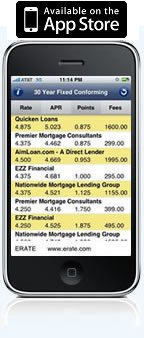Mortgage Fraud: An In-Depth Look at a Hot Topic
by Amy Lillard
(8/28/2012) In any industry and in any setting, fraud exists. Defined simply as a form of deceit in order to obtain profit or some unfair advantage, fraud can be perpetuated on a massive scale involving numerous participants. Or it can be performed on a small, individual scale, with or without conscious intent.
In the housing market, mortgage fraud is a common occurrence. It’s viewed as a relatively low-risk and high-yield activity — and in some cases, people aren’t even aware that they are involved. All in all, the FBI considers mortgage fraud one of the fastest growing crimes and a highly resilient type of fraud, one that readily adapts to economic changes and modifications in the lending and regulatory environment.
In the last few years of housing market decline, the environment has been a particularly attractive one for mortgage fraud. Earlier this month, reports indicated that the risk of mortgage fraud on new loan originations rose 7 percent between Q1 and Q2 of this year. In addition to fraud with “normal” originations and loans, many schemes now involve our increasingly common market realities — foreclosures, short sales, reverse mortgages, and more. The number of metropolitan statistical areas considered “very high risk” for mortgage fraud rose from 63 to 91 during that time. FBI analyses consistently rate top states for mortgage fraud as California, Florida, New York, Illinois, Nevada, and Arizona.
At the same time on a much larger scale, mortgage fraud is in the news for a joint federal and state probe into mortgage-backed securities fraud. Investigations point to big banks that packaged and sold bad mortgages in the years leading up the financial crisis as a major cause of housing market decline.
Mortgage fraud can be perpetuated by borrowers, lenders, and all the myriad officials and professionals involved in the housing and mortgage industry — brokers, appraisers, underwriters, agents, attorneys, and more. But no matter who initiates it, fraud ends up affecting everyone. And it has a negative impact on the market and the economy at large.
There are three types of mortgage fraud as classified by federal regulators and analysts.
FOR HOUSING
Fraud for housing, also known as fraud for property, is typically committed by borrowers with the goal of obtaining a property. Usually, borrowers will use false information about employment, income, or assets to qualify for a loan, which can often mean falsifying or forging documents like W-2s, bank records, and tax returns as support.
These are smaller scale instances of fraud, involving a single loan and the borrower (with or without the knowledge of the broker or loan officer). And usually, the borrower fully intends to pay the loan — the goal is to simply qualify for something for which they would not otherwise.
Some of the activities here can seem like no big deal at first — taking money from the seller for repairs without disclosing it to the lender, accepting down payment gifts that will be repaid, telling little white lies on the loan application. But all count as fraud, and can be cause for punishment.
While these may be smaller in scale to other types of fraud, punishment can still add up — counts of forgery, computer fraud, bank fraud and other legal terms can result in months or years in prison.
FOR PROFIT
Fraud for profit, sometimes called “industry insider fraud,” is a more costly type of fraud for all involved. This type of fraud usually involves a group of people from all the different roles in the mortgage industry. According to the FBI, 80 percent of all reported fraud losses involve this type of fraud, led by collaboration or collusion by industry insiders.
This fraud occurs on a much bigger scale with elaborate schemes and multiple loans. An example will illustrate. In late 2007 in Florida, 31 people were charged in a mortgage fraud scheme involving the purchase of 27 properties in the region. Sellers overstated the true selling price of their properties, straw buyers were paid to participate in the fake purchase of these properties, loan officers submitted fraudulent mortgage loan applications with fake employment and income verification, and appraisers verified the inflated and false property values. It was a concerted and complex effort resulting in major arrests and sentencing.
One of the most common frauds in this category is something called “flipping.” While the practice of buying a house, making improvements, and selling them for profit is completely legal, the fraud comes in when buyers lie about value of improvements and use fake appraisals to get inflated sales prices. Increasingly common as well is foreclosure fraud. Small-scale schemes involve buyers contacting homeowners in the early stages of loan default and promising to help the owner get rid of debt. For a fee. The fraudster collects the fee and disappears.
Fraud for profit involves a long list of illegal behaviors involving multiple people, transactions, omission, and misrepresentations. All involved are well compensated for their roles. Unfortunately, borrowers may be unaware of what’s happening and unwittingly participate.
FRAUD FOR CRIME
Then there’s a growing trend of fraud for criminal enterprise. On the scale of crime and punishments meted out, mortgage fraud offers some criminals the opportunity for greater profits, fewer dangers than with more violent crime, and reduced sentences.
The examples here often center upon using real estate to launder money (concealing its identity, source and destination) from a criminal endeavor, like drugs and other organized crime activities. Property flipping is a common method of doing this.
Overall, mortgage fraud is difficult to monitor and regulate, in part because no single regulatory agency is in charge of monitoring this type of crime. Instead, the FBI, Department of Housing and Urban Development (HUD), IRS, Postal Inspection Service, and state and local agencies can all be in charge of investigating this type of fraud.
To stop it, the fraud on a bigger scale for the purposes of profit and criminal enterprise requires honest people reporting when something isn’t quite right. If you are approached by an industry professional with something that seems illegal or not legitimate, you can report the incident and individuals to a trusted real estate attorney, and/or the FBI.
Individually, it’s up to you self-police as well. Recognize that even small fibs during a mortgage application process can constitute fraud, and ensure that your information is accurate and honest.
Other related articles:
Robo-Signing: A Deeper Look at Continuing Fraud
Understanding Mortgages: Where to Get a Mortgage
CFPB: Consumers complain about mortgages more than any other financial service tracked
Impending federal rules prompt mortgage servicers to clean up their act
Mortgage fraud up more than 30 percent last year
SEC sues former Fannie, Freddie execs for mortgage securities fraud dating back five years
No shortage of short sale fraud
Fannie Mae & Jumbo Mortgage Rates
Just One Click! = Current Rate Chart

Start by selecting your state

Amy Lillard
The ERATE® Resource Guide to No-Closing-Cost Refinancing
Principal Reduction: New Programs, More Controversy
Understanding Mortgages: Mortgage Paperwork
Understanding Mortgages: Types of Mortgages
Understanding Mortgages: How to Get a Mortgage
Understanding Mortgages: Buy or Rent?
Understanding Mortgages: Working with a Real Estate Agent
Understanding Mortgages: Working with a Real Estate Agent
Refinancing: Selecting a Loan

- Mortgage Program Options
- Interest Only Mortgage
- 100% Mortgage Financing - No Down Payment
- Mortgage Rates Comparison
- Search for Mortgage Rates
- No Costs Mortgage Refinancing
- 2% Rule - Refinancing Mortgage
- Yield Spread Premium
- Prepayment Penalty - Mortgage Refinancing
- What is APR and how is it calculated?
- Private Mortgage Insurance - Refinancing
Moving Ahead With Your Refinance
Get the Updated and Improved Mortgage Rates App from ERATE.com
FREE Mortgage Rate WidgetsYour State's Rates or National Rates Get this Widget for any State you want


